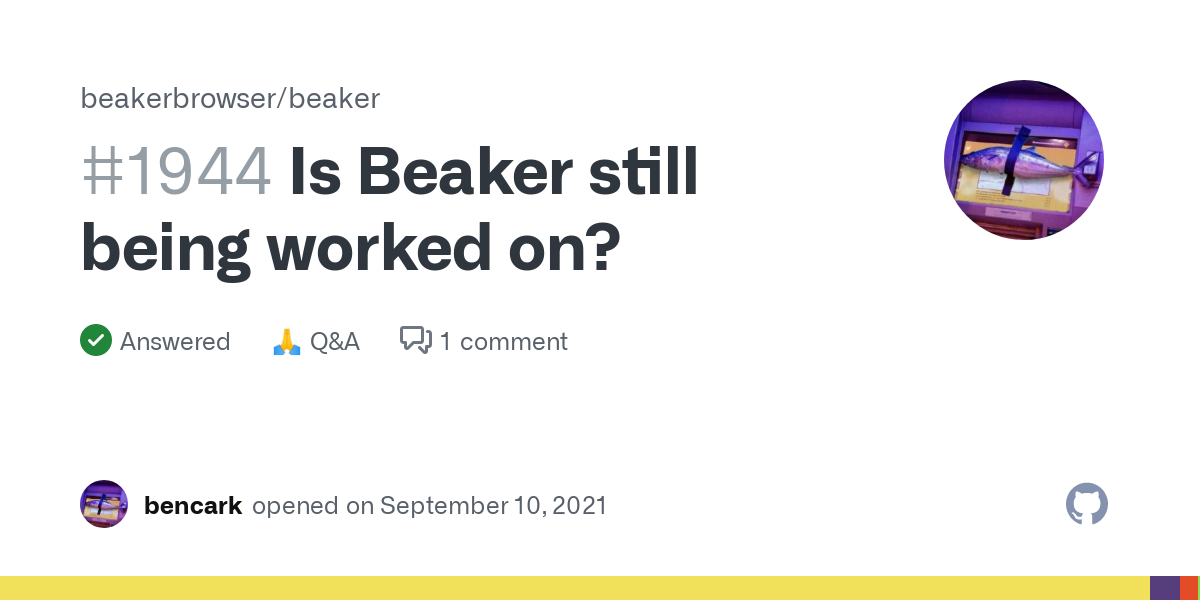He/him. Fighting for climate justice
- 2 Posts
- 7 Comments
This may be unremarkable to others, but I was really excited to see that Qalculate! can solve for x. I really miss my TI-89 graphing calculator and having something that can solve complex equations for me is comforting.
When I use the Lagrange Gemini client, for every game on gemini://gemif.fedi.farm/ that I try to play, the first page loads, but when I click the first “Let’s Play!” link, it says “🚫 Permanent Failure Your request has failed and will fail in the future as well if repeated.”
It seems to load fine in ncgopher, Castor, and Ariane, so I’m not sure what’s going on, but you might want to look into that.
WAIT… Did this article actually list Medium as an example of a minimal site??? Medium is listed as an example of an unnecessarily bloated website in the classic The Website Obesity Crisis, and although I heard something about Medium trying to cut down on their bloat recently, their site has been so bad that I groan every time I see a Medium link, and I am not eager to give them a second chance.
Red Hat -> SUSE -> Knoppix -> Ubuntu -> Manjaro -> Pop OS
- Red Hat - My high school friend and his dad introduced me to Linux and helped me build a desktop to install it on. They installed Red Hat. I liked the aesthetic and it worked ok at first, but gradually bitrot and frustration with RPM dependency hell led me to reinstall with SUSE.
- SUSE - I thought maybe commercial support would make a difference, so I actually purchased SUSE in a box instead of downloading it for free. I guess I hoped it would be Red Hat, but better? Bitrot and dependency hell eventually made this system unusable as well.
- Knoppix - So I figured, hey, if I store the operating system on a CD and never modify it, it can’t bitrot, right? I just used my hard drive for storing documents etc., and ran Knoppix off of a CD. This worked fine, especially since this was right around when Gmail and similar web apps were being released, so I was able to get a lot done in the browser. Of course, not being able to install and update software eventually became too frustrating, and once you install Knoppix to the hard drive it can suffer bitrot too. The last straw was not being able to get any video editing software working after I bought a camcorder. I broke down and bought a Macbook Pro.
- Ubuntu - I heard it was way more usable than previous Linux distros, so I started dual-booting my Mac. It was pretty good, but not good enough to make me switch from OS X full time. Eventually I bought a new Macbook Pro and never got around to dual-booting that one, and I stopped using Linux on the desktop for a while. I continued using Ubuntu on my Linode-hosted web server, though.
- Manjaro - I bought a Pinebook Pro before it shipped with Manjaro, but the default Debian install was a fragile hack and I heard Manjaro was better, so I tried it and it was. It becoming the default solidified this decision.
- Pop OS - After enjoying the Pinebook Pro, I decided that I wanted to support open hardware + software, so I bought a System76 Thelio and switched to Linux full-time. I gave the default Pop OS a try, and I really like some aspects like the tiling window manager. So I’m still using that, for now!

 91·4 years ago
91·4 years agoLet me be clear, I support Tusky and other apps refusing to connect to Gab, and I think one of the best parts of the Fediverse is the potential for better moderation from accountable admins on your local instance. Free speech doesn’t mean that everyone has to give Nazis a platform, any more than it means that we need to let spammers spread phishing schemes. Hate speech drives out speech from the oppressed, and letting nazis spread unchecked makes it harder for anyone else to communicate, just as spam makes it hard to find real conversations. Alternately, I could compare it to ad-blocking and how it’s necessary to make the Web usable.
That is different from an app store banning every app whose moderation policies they dislike. This reminds me of when Tumblr had trouble keeping its app in app stores because of the porn on the platform, and Tumblr responded by banning porn and destroying an entire subculture, along with its own popularity. This is more like removing an open source email app from the app store because its spam filters aren’t as good as Google’s.
It’s also different if a monopolistic app store with almost complete control over a platform bans an app vs., say, F-droid banning an app. F-droid trivially supports adding your own repositories or sharing apps in person. Monopoly power and lock-in render even reasonable moderation policies very troubling, because there is no recourse if the monopolist gets it wrong.

 4·5 years ago
4·5 years agoI hope that all of the FOSS link aggregators are eventually compatible and able to federate with one another!





People would have to be nuts to build anything on his platform after he killed all third party Twitter clients and ruined the Twitter API. That’s not how you build trust.